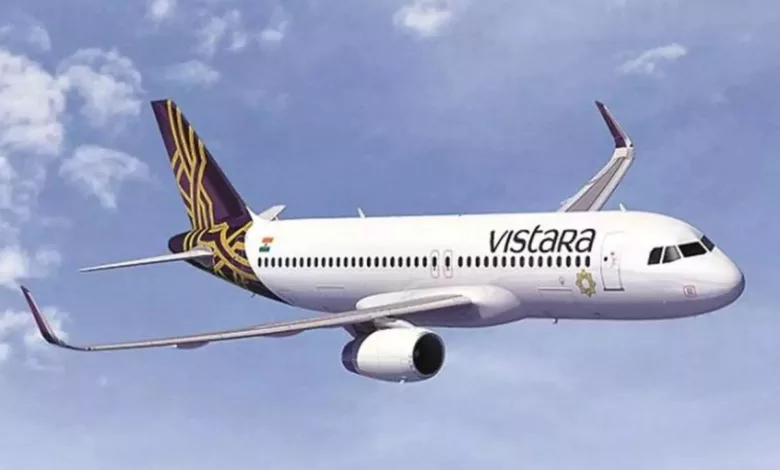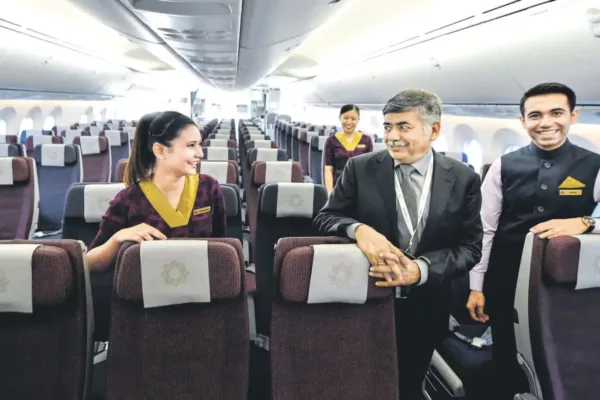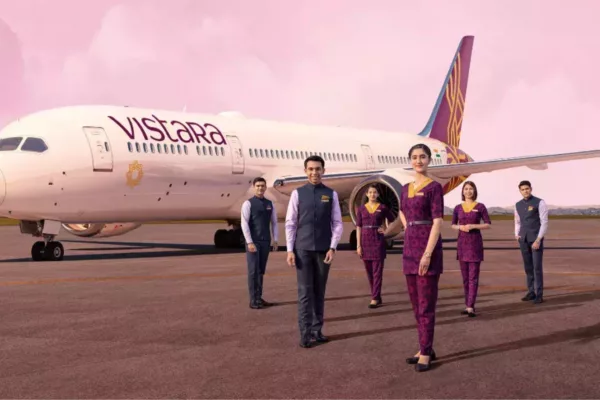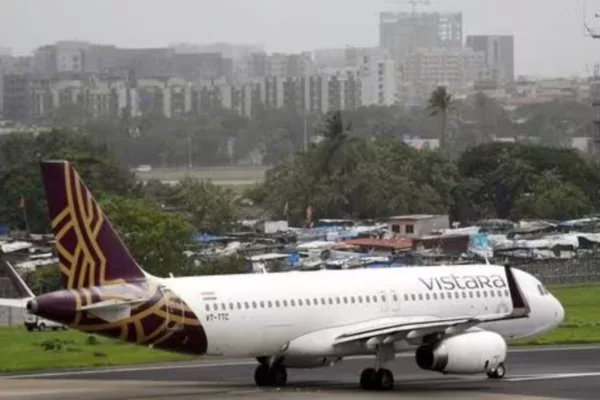Vistara has been penalised 70 lakh for failing to operate the required number of flights to the northeast.
Vistara pays a fine "Under Protest" for violating the route dispersal guidelines

Vistara has been penalised 70 lakh for failing to operate the required number of flights to the northeast.
The civil aviation regulating body Directorate General of Civil Aviation (DGCA) fined Air Vistara 70 lakh because the business did not operate the necessary minimum number of flights to the country’s northeastern underserved areas.
The penalty was assessed in October of the previous year for violating the regulations in April 2022. The airline has already paid the fee, according to a DGCA representative. A Vistara official responded, saying, “Over the past few years, Vistara has consistently observed the Route Dispersal Guidelines.
We frequently deploy more ASKMs than necessary in the various categories, as required by the RDG guideline. The spokeswoman agreed that some flights had to be cancelled as a result of the closing of Bagdogra airport but claimed the required number of flights in April 2022 was only reduced by 0.01 percent as a result.

Additionally, the spokesperson said, “as per the revised Civil Aviation Policy 2016 which took effect from Northern Winter 2017–18, trading of ASKMs has also been discontinued, which has limited the choices open to airlines to make any last-minute adjustments in such cases.”
The flagship Regional Connectivity Scheme UDAN (Ude Desh ka Aam Nagrik) programme of the Ministry of Civil Aviation has already run for five years. In April 2017, the maiden flight took off.
The programme was launched in October 2016 to achieve the objectives of the average person through improved air connectivity and aviation infrastructure in Tier II and Tier III cities.
Despite this, Vistara has paid the fine against its will by the court’s ruling and as a law-abiding organisation. Additionally, as we have in the past, we affirm that we have deployed capacity since then that is greater than the RDG requirement.
In their joint venture, Vistara, Tata Sons Private Limited and Singapore Airlines Limited (SIA) each possess 49% of the company, with Tata Sons holding 51% of the partnership. As TATA SIA Airlines Limited, the business is officially registered.
A long-cherished shared desire to provide a premium flying experience to air travellers in India was finally realised in 2013 by two storied companies, Tata Sons and Singapore Airlines. The Tata group had long aspired to return to the aviation industry due to its strong historical ties there.

After Tata Airlines was renamed Air India and later nationalised, this wish finally came true. Both the Tata group and Singapore Airlines were ardent supporters of the Indian aviation industry’s growth potential and made previous attempts to break into the market; initially, in 1994, by forming a joint venture to launch an airline in India, and then, in 2000, by working together to buy stakes in Air India.
But after foreign investment limitations were lifted in 2012, the partners once more applied for authorisation for a tie-up, which they were granted in October 2013. The holding company for Vistara, TATA SIA Airlines Limited, was established on November 5, 2013.
The joint venture’s mutual objective is to transform air travel in India by giving Indian passengers a smooth and customised flying experience that combines the famed hospitality of Tata and SIA with their service excellence. The Sanskrit term “Vistaar,” which means “a limitless expanse,” is whence the name “Vistara” originates.
The “limitless” sky, which is the setting of Vistara, serves as the source of the name Vistara. The brand also gets inspiration from the image that travellers most often connect with a comfortable and joyful flight: the vast, blue horizon they view through an aeroplane’s windows. Vistara christens its brand motto as “fly the new sensation” as it seeks to change travellers’ flying experiences in India.
With its first flight from Delhi to Mumbai on January 9, 2015, Vistara officially launched its operations. Vistara has quickly increased its network and service offering footprint in a short period. With a fleet of 54 aircraft that includes 41 Airbus A320S, 5 Boeing 737-800NG, 5 Airbus A321neo, and 3 Boeing B787-9 Dreamliner, Vistara connects 43 locations inside and outside of India.
It runs more than 260 flights per day. Since it began operations, Vistara has already transported more than 35 million content passengers.
Vistara pays a fine of 70 Lakh “Under Protest” for violating the route dispersal guidelines

With its headquarters in Gurugram and its hub at Indira Gandhi International Airport, Vistara is an Indian full-service airline operated by Tata SIA Airlines Limited. The airline’s inaugural trip between Delhi and Mumbai departed on January 9, 2015. The airline was founded in collaboration with Singapore Airlines and Tata Sons.
The airline carried more than two million passengers by June 2016, and by May 2019 it was the sixth-largest domestic airline with a 4.7% market share. The airline provides service to 34 locations using a fleet of Airbus A320, Airbus A321neo, Boeing 787-9, and Boeing 737-800NG aircraft.
The full-service carrier paid the punishment “under protest” after the aviation regulator DGCA fined Vistara 70 lakh for failing to comply with the Route Dispersal Guidelines last year.
In addition, the airline claimed that for the previous many years, it had completely complied with the Route Dispersal Guidelines (RDG) and that it had only missed compliance by one flight. RDG requires airlines to run a specific number of flights to underserved regions, including the North East.
According to a senior DGCA official, Vistara was fined 70 lakhs for failing to comply with RDG in October of last year. In a lengthy statement, Vistara stated that it was prepared to deploy much more ASKM (Available Seat Kilometres) than the minimum required for each category for April 2022 as well. This would have resulted in 1.22 per cent of flights on CAT IIA routes as opposed to the required 1%.
However, several flights had to be cancelled as a result of Bagdogra airport’s closure, which contributed to a 0.1% decrease in the required number of flights in April 2022.
It further stated that “as per the new Civil Aviation Policy 2016, which became effective from Northern Winter 2017–18, trading of ASKMs has also been discontinued, which has limited the possibilities available to airlines to make any unplanned modifications in such circumstances.” According to Vistara, “the penalty was paid under protest.” We further affirm that we have deployed capacity over the RDG demand since then, as we always have, it said.
Edited by Prakriti Arora






